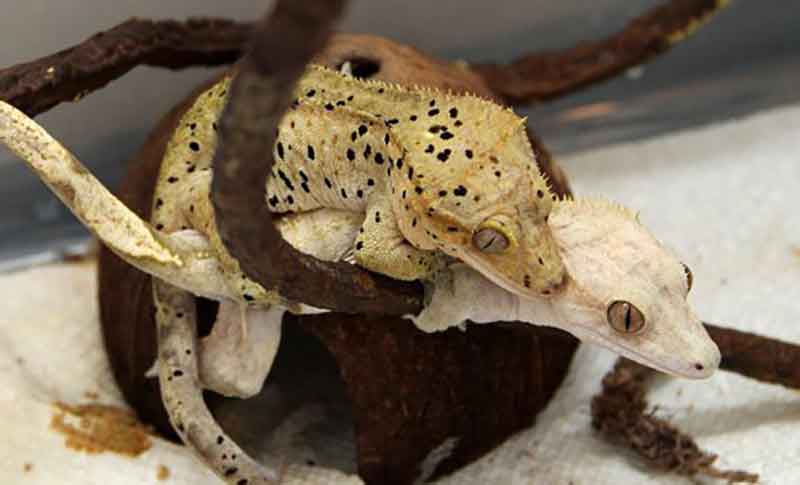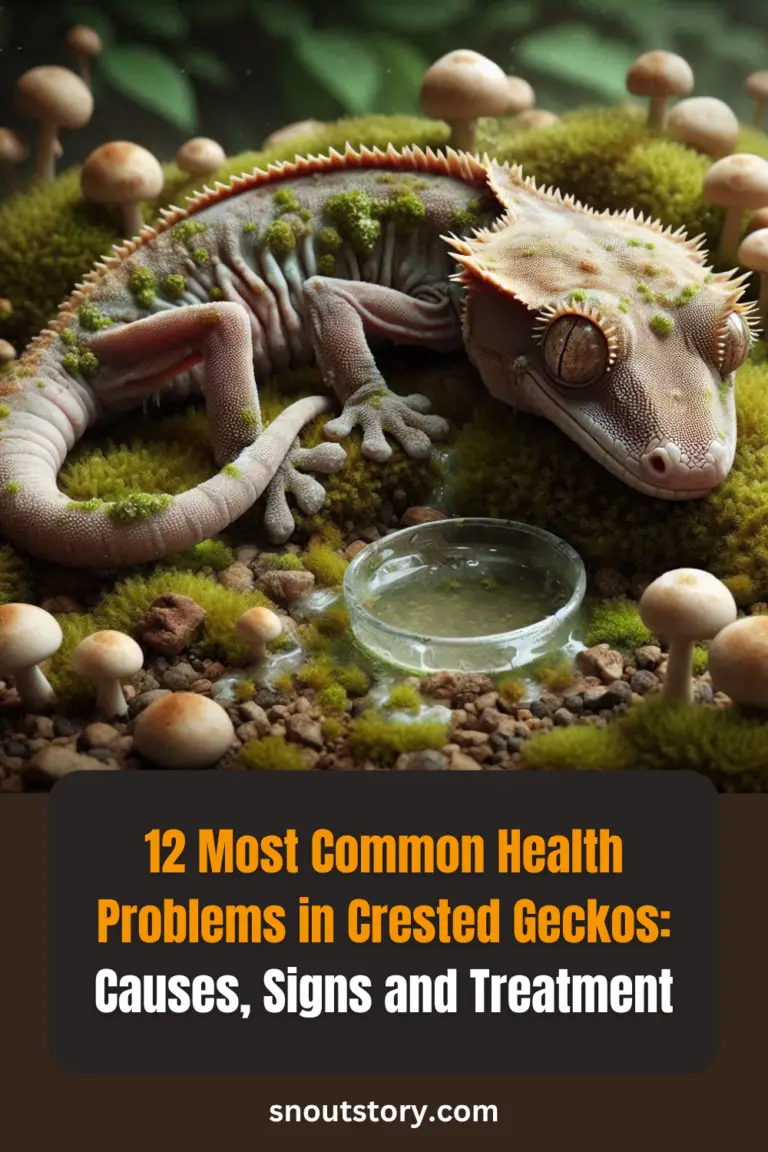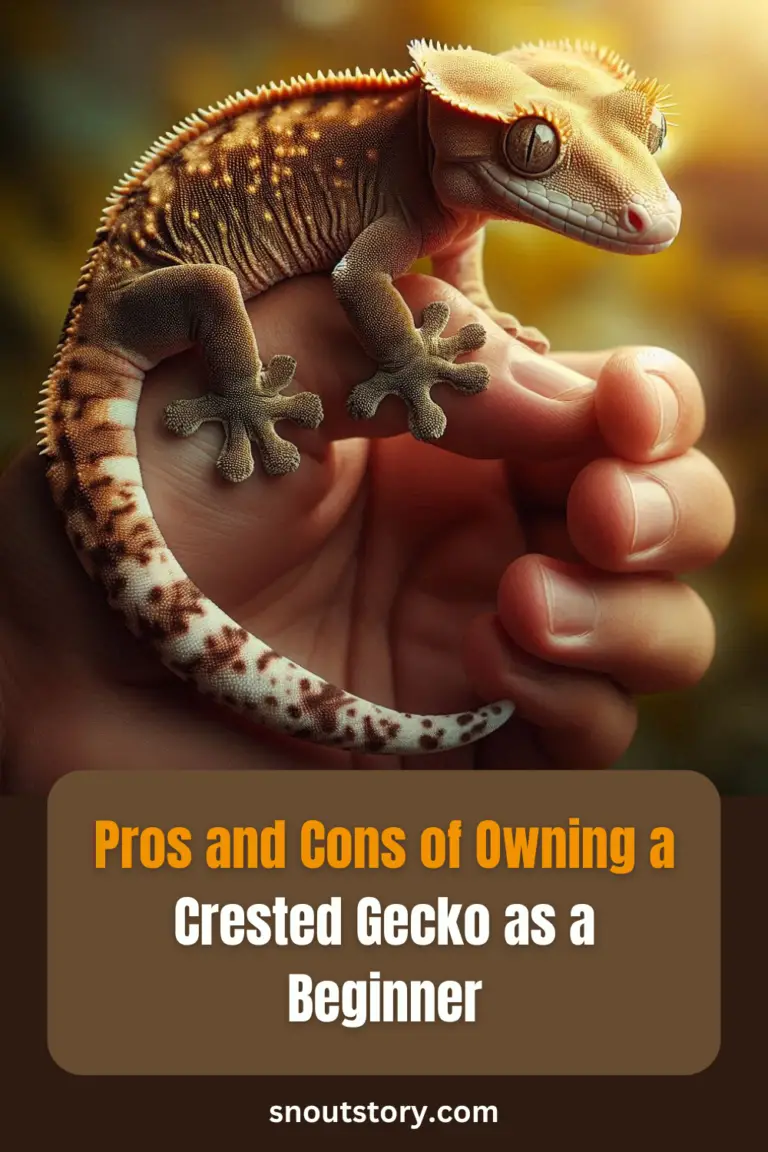Disclaimer
“This Blog is completely reader supported, for any purchase you make from affiliate links on this blog we earn a small commissions with no extra cost to you, which I use to feed my poor puppies 🥺”
Breeding crested geckos as a beginner might seem daunting, but with the right information, it can be a fascinating and rewarding endeavor. This guide is designed to walk you through the entire process, from ensuring your geckos are healthy and ready to breed, to setting up a conducive environment that encourages successful mating.
We’ll delve into the specifics of managing the breeding cycle, the essentials of egg incubation, and the joys of caring for your hatchlings. With practical tips and detailed advice, you’ll gain the confidence to start your breeding journey, ensuring both the well-being of your geckos and the health of the future generations.
Whether you’re a new gecko owner or looking to expand your hobby, this guide will equip you with the knowledge you need to breed crested geckos successfully.
Understanding the Basics of Crested Gecko Reproduction
Getting started with breeding crested geckos begins with a solid understanding of their reproductive behaviors and cycles. Crested geckos reach sexual maturity between 15 to 18 months of age, and it’s crucial to ensure they are healthy and have reached a sufficient weight before breeding.
These geckos are generally seasonal breeders with their activity peaking during the warmer months, typically from spring to early fall. Females can lay multiple clutches of eggs in a season, with each clutch usually containing two eggs.
Successful reproduction depends heavily on creating a stress-free environment with optimal temperature and humidity, closely mirroring their natural conditions. This not only promotes regular breeding cycles but also enhances the health of the eggs and the vitality of the hatchlings.
By understanding these basics, you can create a breeding plan that respects the natural tendencies of crested geckos, ensuring a successful and humane breeding process.
Preparing Your Geckos for Breeding: Health and Age Considerations

Preparing your crested geckos for breeding involves several important health and age considerations:
- Verify Age and Maturity: Ensure both male and female geckos are at least 15-18 months old, which is generally the age when they reach sexual maturity. This age ensures that they are physically developed enough to handle the rigors of reproduction.
- Health Assessment: Before initiating any breeding efforts, have a veterinarian who specializes in reptiles perform a thorough health check on each gecko. This check should include assessments of weight, overall physical condition, and potential parasites.
- Nutritional Support: Ramp up their nutrition by providing a well-balanced diet rich in calcium and vitamins, particularly for females, who will need additional nutrients to produce healthy eggs. Supplements can be crucial during this phase to prevent health complications like metabolic bone disease.
- Weight Monitoring: Maintain a regular weighing schedule to monitor their health. Females, in particular, should be in optimal body condition—not underweight or overweight—as this affects egg development and general health during breeding.
- Environment Optimization: Adjust the enclosure conditions to simulate the seasonal changes that encourage breeding in their natural habitat. This includes carefully managing temperatures and lighting to encourage natural breeding behaviors.
- Behavioral Observations: Monitor their behavior for readiness to breed, such as increased activity and interaction between potential mating pairs. It’s important to ensure that the environment remains stress-free as stress can negatively impact their health and breeding success.
By following these steps, you can prepare your crested geckos for a successful and healthy breeding season, ensuring both the well-being of the adult geckos and the viability of the offspring.
Setting Up the Ideal Breeding Enclosure For Crested Geckos
Setting up the ideal breeding enclosure for your crested geckos requires careful consideration to ensure both safety and comfort for the geckos throughout the breeding process.
Start by selecting a spacious enclosure; a minimum of 30 gallons is recommended for a pair, but larger is better to provide ample space for both geckos to move and interact without stress.
Here’s a tank which we have been personally using and would like to suggest you for breeding your Crested Geckos, this not only the right size but also easy to maintain and separate male and female post breeding.
REPTI ZOO Reptile Glass Terrarium, 18″ x 18″ x 24″ Front Opening Terrarium with Double Hinge Door & Top Screen Ventilation, 30 Gallon Tank

The enclosure should have multiple hiding spots and climbing structures, as these features mimic their natural environment and can reduce competition and stress between the geckos.
It’s also important to maintain the temperature within a range of 72 to 78 degrees Fahrenheit during the day with a slight drop at night, which can help simulate their natural habitat and encourage breeding behaviors.
Additionally, high humidity levels between 60% and 80% are crucial, so incorporating a reliable misting system or manual misting twice daily will aid in maintaining this environment.
Lastly, ensure the enclosure is kept clean and the substrate changed regularly to prevent the buildup of bacteria and fungi, creating a healthier environment for breeding. With these elements in place, you can create a conducive environment that enhances the likelihood of successful breeding.
The Breeding Process: Timing and Techniques
Understanding the timing and mastering the techniques of crested gecko breeding are pivotal for successful reproduction. Breeding typically begins in the spring and can last until autumn, capitalizing on their natural reproductive cycle.
Before pairing geckos, ensure they are well-acclimated to their environment and in optimal health, which involves a pre-breeding veterinary check-up and dietary enhancements to boost their vitality.
When introducing the male and female, monitor their interactions closely; signs of aggression may require temporary separation and gradual reintroduction. For effective mating, provide a breeding box within the enclosure—a secluded, comfortable area filled with moist sphagnum moss to encourage the female to deposit her eggs.
After mating, it’s essential to provide the female with extra calcium and vitamins to support egg production and replenish her reserves. Post-egg laying, carefully transfer the eggs to an incubator set at a stable temperature of around 70-75 degrees Fahrenheit to ensure optimal development. By closely following these steps and maintaining vigilant care throughout the process, you can significantly enhance the chances of a successful breeding outcome.
Incubating Crested Gecko Eggs: A Step-by-Step Guide
Successfully incubating crested gecko eggs involves careful preparation and attention to detail. Start by setting up an incubator that maintains a consistent temperature between 70 to 75 degrees Fahrenheit, as fluctuations can affect the development of the embryos.
There are many incubators out there in market, but choosing a correct incubator without putting too much load on your pocket is also important, here is one which you can go with, not only it helps maintain optimal temperature but also makes sure your eggs don’t overheat.
Happybuy Red Reptile Incubator 25L Scientific Lab Incubator Digital Incubator Cooling and Heating

Use a substrate like vermiculite or perlite moistened with water at a 1:1 ratio by weight to provide the necessary humidity without soaking the eggs. Place the eggs gently in the substrate, ensuring they are half-buried to prevent rolling while still allowing adequate air exposure. It’s important to resist the urge to rotate or move the eggs once they are set, as this can damage the developing gecko inside.
Check the humidity regularly, and lightly mist the substrate if it begins to dry out, being cautious not to directly wet the eggs. The incubation period typically lasts between 60 to 90 days, with average being 70-75 days depending on temperature and egg health. But some times it may take even up to 120 days to hatch. But some times at cooler temperatures it may take even up to 120 days to hatch.
During this time, keep the incubator in a stable environment free from vibrations and excessive noise to avoid disturbing the delicate process. By following these steps and closely monitoring the incubation environment, you can maximize the likelihood of hatching healthy crested geckos.
Caring for Hatchlings: Essential First Steps

Caring for hatchling crested geckos begins with establishing a nurturing and safe environment tailored to their fragile needs. Start by setting up individual enclosures for each hatchling to prevent any stress or competition, crucial for their health and early growth.
Ensure these mini habitats are equipped with adequate hiding places and low branches for climbing, simulating a natural setting on a smaller scale. It’s important to maintain a higher humidity level, around 80-90%, to facilitate their shedding process, which is vital for young geckos. Regular, gentle misting will help achieve this, but be cautious to avoid oversaturation, which can lead to health issues.
Initiate feeding with small-sized insects and crested gecko-appropriate food, perfectly portioned for their tiny mouths, about a few days post-hatching to allow them time to absorb their yolk sac fully. Monitor their health and growth closely, observing their activity levels and feeding response, and keep handling to a minimum during these initial weeks to minimize stress. These first steps are critical in setting the stage for healthy development and a thriving life for your crested gecko hatchlings.
Common Breeding Challenges and How to Overcome Them
Breeding crested geckos can sometimes present challenges, but understanding these issues and knowing how to address them can greatly enhance your success rate. One common problem is egg infertility, which can often be mitigated by ensuring that both male and female geckos are healthy and of breeding age before mating.
Another issue is the geckos not breeding at all, which can sometimes be resolved by adjusting environmental factors such as the lighting cycle, temperature, and humidity to more closely mimic natural seasonal changes that stimulate breeding behavior.
Egg health is also crucial; issues like moldy or collapsed eggs can often be prevented by maintaining the correct humidity levels in the incubation medium and ensuring that the incubation container is properly ventilated.
Additionally, stress in female geckos can lead to poor egg production. Reducing stress through adequate space, proper diet, and minimal disturbance can help maintain a healthy breeding environment. By proactively addressing these common breeding challenges, you can increase both the health of the parents and the viability of the eggs, leading to a more rewarding breeding experience.
Tips for Ensuring Genetic Diversity and Healthy Offspring
Ensuring genetic diversity and the health of offspring is paramount in crested gecko breeding to maintain the vitality of the species. One effective strategy is to avoid inbreeding by keeping detailed records of each gecko’s lineage and carefully selecting breeding pairs with diverse genetic backgrounds. Introducing new bloodlines periodically through responsible breeding practices can help prevent genetic defects and promote overall health.
Additionally, monitoring the health and genetic traits of offspring through careful observation and genetic testing can provide valuable insights into the success of breeding programs. Providing a balanced and nutritious diet to both breeding adults and their offspring is essential for optimal health and development, as it ensures they receive the necessary nutrients to support growth and reproduction.
Regular veterinary check-ups can also help identify any potential health issues early on, allowing for prompt intervention and treatment. By implementing these strategies, breeders can contribute to the preservation of genetic diversity and the production of healthy crested gecko offspring for generations to come.
Summary
In conclusion, breeding crested geckos as a beginner can be a highly rewarding experience when you’re equipped with the right knowledge and tools. From understanding the basics of crested gecko reproduction to setting up the ideal breeding environment, each step plays a crucial role in the success of your breeding efforts.
Careful consideration of health and age, proper timing and techniques, and maintaining an ideal incubation setup are essential to producing healthy offspring. Additionally, addressing common breeding challenges and ensuring genetic diversity are critical for sustaining a robust and healthy population.
By following these guidelines and remaining attentive to both the geckos’ environment and their physical health, you can embark on a successful breeding journey, contributing to the well-being and proliferation of these fascinating creatures.
Whether for personal satisfaction or to enhance your collection, the insights provided here will help you navigate the complexities of crested gecko breeding with confidence and success.
Recommended

Vedant Narvekar is an experienced digital marketing expert with a profound love for nature and animals. With a career rooted in leveraging online platforms to drive engagement and promote meaningful causes, Vedant’s passion for animals inspired him to start Snout Story—a blog dedicated to educating people about pet keeping and sharing proper knowledge about caring for animals. Drawing on his expertise in digital marketing, Vedant utilizes his platform to advocate for responsible pet ownership, providing valuable insights on pet care, training, nutrition, and more. Through Snout Story, Vedant aims to empower pet lovers with the information they need to provide the best possible care for their furry companions, while also fostering a deeper appreciation for the natural world and the creatures that inhabit it.







